How I Increased Win Rate In Trading (WITH PROOF)
When I started trading around 8 years ago, I saw many people giving advice on how to get a high win rate.
But no one showed any proof.
I mean, who knows if they were even getting a high win rate themselves?
Maybe they were just talking big and losing money behind the scenes.
So, I’m creating the kind of video that my beginner self would have found useful.
Because now I have proof.
Since I have shared live trade setups with Patreon supporters for multiple years, I now have long-term data that shows the way I trade not only worked but also achieved a relatively high win rate!
Getting a high win rate with just 10 or so trades is easy.
We can get lucky.
But getting a good win rate and making profits in the long run?
That’s more important.
In the live setups I have shared over the years, I was able to get a 67.83% win rate across approximately 398 trades.
These include both long-term and short-term trades.
For short-term trades only, I achieved a 57.25% win rate across approximately 248 trades.
That’s a lot of trades!
So here are 5 simple rules I followed to get a win rate that actually worked in the long term.
Number 5:
When I first started trading, many gurus said to set big profit targets.
They said your profit target should be bigger than your stop-loss so that when you lose, the next trade can easily make up for it.
But almost every time I tried this, instead of big profits, I ended up with big losses.
These gurus even showed screenshots of big profits, but they were probably showing only handpicked setups.
Because when I started testing things myself and making decisions based on data, I found something really important.
In my testing, using high reward-risk ratios above 2 to 1 in the trending markets, not only lowered the win rate but also reduced the overall profit.
Using lower reward-risk ratios increased the win rate but lowered the profit potential again.
So, the profit made went down whether I aimed for targets that were too big or too small.
Why does this happen?
In trending markets, prices often move up and down in a zig-zag pattern instead of making strong moves.
When I used a reward-risk ratio that was too high, the profit target was so far that there was enough time for the trend to weaken, start ranging, or reverse completely.
Most trends simply don’t last forever.
On the other hand, since the price has a higher chance of moving in the trend direction, when I used a lower reward-risk ratio, I was literally stopping myself from making more profit.
From my testing, the best reward-risk ratio in a trending market is around one point five to 1.
This ratio gave a good win rate and kept the profit relatively high in trending markets.
That’s one of the reasons I have used the one point five to 1 ratio from the very first video.
When I did similar tests again on the Trading Rush channel, the results were very similar.
So, around a one point five to 1 ratio is the sweet spot for me to keep a high win rate while still making good profits.
But remember, this is only for the normal trending market.
If I spot a news-driven move or something causing a big strong trend, then I prefer using big profit targets.
But in most trending markets, I like to use around a one point five to one ratio as it’s the best according to data.
It keeps the profit potential high while getting a relatively high win rate.
Number 4:
In my beginner days, I would wait for the price to pull back in an uptrend, take a long entry, and set the profit target above the swing high.
It made sense because the price was more likely to move above the swing high in a strong uptrend.
However, not all uptrends are strong; many are slow.
I realized that if the pullback was big, the swing high could become a strong resistance area.
When that happens, many traders can close their long positions before reaching the swing high, creating higher selling pressure.
Others might take new short trades from the resistance, creating even more selling pressure.
This can lead to the price moving sideways, slowing down from this resistance, or even reversing completely.
I saw this happen many times when I set my profit targets way above the swing high resistance.
To improve my win rate and trade quality, I started setting my profit targets below the swing high resistance.
This way, even if the price slows down or reverses from the resistance, my profit targets had a much higher chance of being hit.
Of course, if there’s strong news pushing the price beyond the swing high, I’m fine with setting the target above it.
But in regular trends, setting the profit target below the swing high worked much better for me.
Number 3:
Trading reversal setups often made me take trades against the current trend.
For example, if there’s a support area, the price is probably moving towards it as a downtrend.
We know that the price usually moves in the direction of the trend, but it also has a higher chance of reversing from strong support areas.
According to data, the way I draw support and resistance works around 60% of the time.
So I’m obviously not going to ignore the support setup completely.
But when the price gets near support, many things can happen.
The price can reverse if the downtrend is weaker than the support buying pressure.
It can move sideways if both pressures are equal.
Or it can continue the downtrend if selling pressure is stronger.
In two out of these three scenarios, setting a big profit target from the support area doesn’t trigger the profit target.
So what I like to do is buy inside the support as much as possible and exit as soon as the buying pressure ends.
In my experience, the higher buying pressure usually ends when the price is no longer in or near the support.
So I set my profit targets closer to the support.
By exiting trades quickly when support pressure ends, I’ve been able to increase the win rate of my support-resistance setups significantly.
Number 2:
When market conditions get bad and I start losing more trades than usual, or when a setup just doesn’t feel right, I like to use lower reward-risk ratios, such as below 1 to 1.
This increases the win rate in uncertain markets or with low-quality setups, helping me manage losses better during tough times.
From the previous data, we know a one point five to 1 reward-risk ratio is the most optimal in trending markets.
But when the trend becomes bad or slow, temporarily switching to a lower reward-risk ratio has helped me maintain my profits instead of giving them back, while maintaining a high win rate.
Number 1:
When I was a beginner and had found a strategy that actually worked, I used to get a good winning streak from time to time.
But soon after, I would give back all the profits by overtrading in bad markets.
I didn’t know the value of patience back then.
I thought I knew patience in trading, but whenever I opened my charts, I would find trades within a few minutes or even seconds.
So, my actual patience was just around 30 seconds.
That’s stupid.
A proper trader should not find trades every single time they open their charts.
But that was beginner me.
Now, after trading for more than ten thousand hours in the live markets, I’ve learned to go multiple weeks and even months without trading if I don’t see anything worth trading.
Stopping trading when the markets get bad is what kept me from giving back the profits and helped me maintain the high win rate in the long run.
Now, we don’t have superpowers.
We can’t see into the future and stop trading just before the markets get bad.
We will still lose some trades in the bad market because it takes a little time to realize the market has gotten bad.
But once I know the market isn’t right for my strategy, the most important thing I’ve learned is to stop trading and save money.
As some random guy once said, “No trading is also part of trading. It’s called saving money instead of losing it on wrong trades.”
That’s all!

